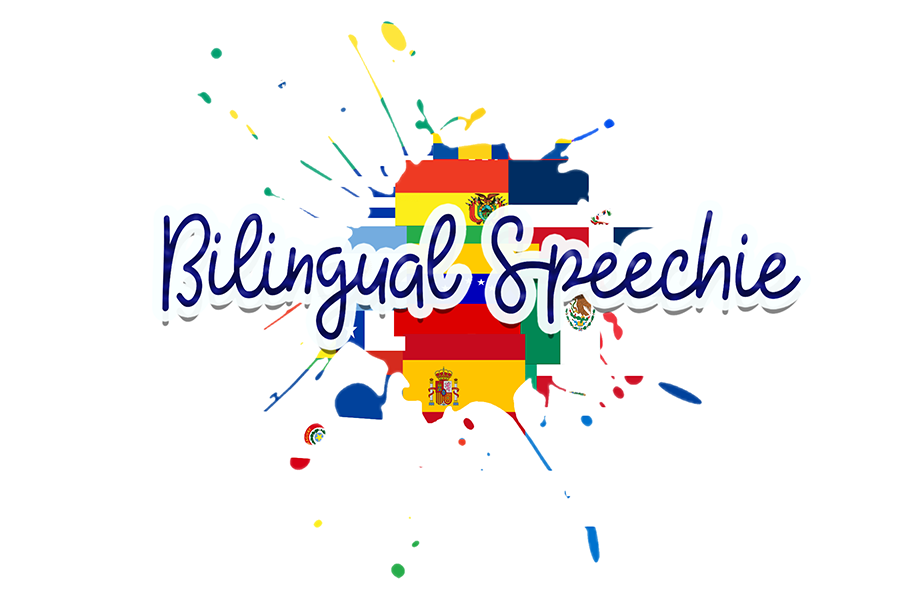por Liliana Diaz marzo 29, 2019 3 Comentarios
¡Hola! ¿Que tal? My name is Liliana Diaz-Vazquez and I am a bilingual speech language pathologist Chicago, IL where I have been practicing as a bilingual SLP for the last 5 years. I am proudly Mexican-American and a native Spanish speaker, a sequential bilingual to be exact! Spanish was my first language growing up and then I acquired English once enrolled in elementary school. I have quite an interesting story on how I became a SLP (as I am sure most of you do because speech language pathology isn’t a common area of study). But more specifically, my story is about how I became a bilingual speech language pathologist.
I’ve always had a strong passion for working with the bilingual population and making a difference in the Latino community since I can remember and picking a career to study was not an easy task. Luckily, my mother has always been my life guidance counselor and I would say that I owe a lot of my career choices to her. My mother always urged to me pursue a career in the medical or healthcare industry where I can utilize my Spanish-speaking skills, in hopes that I can make a difference in the Latinx community. The reason for this is because, growing up in a household where Spanish is the language predominately spoken, meant trips to the doctor with my grandmother or making phone calls for my dad in order to interpret for them. My mother always stressed the importance of being able to find someone who is proficient in Spanish when going to a hospital or any type of facility. But most importantly, she often stressed that the quality of care and communication improves greatly when you have someone that relates to you on a cultural level. And this statement stuck with me forever. She embedded this mission in me, which was to work hard and make a difference in the Spanish-speaking or bilingual community and I am thankful for that.
Now let’s fast forward to undergrad in college. At the time, I did not know much about speech language pathology, but I did know that I wanted to serve the bilingual and Latino community. I was attending the University of Illinois at Chicago and majoring in psychology. My long-term goal was to become a psychologist and open up my own private practice dedicated towards serving the Latinx community. This goal of mine quickly changed when I realized that psychology no longer interested me. My mother continued to persuade me to look into speech language pathology and I finally took her advice. After much research, and after interviewing my community SLPs, I decided to apply to a different school and change my career path.
I was very fortunate to receive admission to the undergraduate program for communication sciences and disorders (CSDI) at Saint Xavier University (SXU). In 2012, I graduated with my bachelor’s degree in CSDI and was immediately accepted into the speech language pathology master’s program at SXU as well. The program did not have a bilingual emphasis or bilingual program, however, I’ve always known that this was the population I wanted to work therefore, I had asked my clinical supervisors and professors for clinical placements and internships within the bilingual population. I was fortunate enough to gain hands-on experience with this population in the school and medical setting. In addition, I was extremely fortunate to have had amazing bilingual supervisors. By the time graduation was near, I had gained experience in diagnosing, treating and evaluating students and patients from diverse and culturally linguistic backgrounds. However, my learning did not stop there.
After graduation, I continued to pursue continuing education courses in bilingual language development and spent countless hours reading research articles associated with bilingual language development and disorders. In addition, my first job was in two elementary schools where the school population primarily consisted of 90% English language learners. By the end of my CF year, I felt confident enough to say that I had met the American Speech Hearing Association (ASHA) standards for bilingual service delivery which states the following: “Bilingual SLPs must be able to independently provide comprehensive diagnostic and treatment services for speech, language, cognitive, voice, and swallowing disorders using the client’s/patient’s language and preferred mode of communication. They must also have the linguistic proficiency to describe the process of normal speech and language acquisition—for both bilingual and monolingual speakers of that language, including how those processes are manifested in oral and written language (or manually coded languages when applicable); select, administer, and interpret formal and informal assessment procedures to distinguish between communication differences and communication disorders; apply intervention strategies for treatment of communication disorders in the language or mode of communication most appropriate for the needs of the individual.”
Becoming a bilingual SLP was a long journey but well worth the time. I welcome any questions from anyone interested in pursuing speech language pathology with a bilingual emphasis.
abril 28, 2022
Hey! I was wondering if you had to “apply” for the ASHA bilingual service or if you felt you met the criteria and that was it? I’m trying to figure out my next steps since I’ve been a practicing therapist for over 5 years and I speak both English/Spanish and want to make sure I portray myself correctly as a bilingual therapist. Thank you!
agosto 30, 2021
Thanks for sharing Liliana- I have been practicing for the past 6 years and have recently become more interested in the complexities of bilingualism, how decisions are made for our bilingual students especially when making determinations for special education based on initial testing.
I am focusing more on testing, and want to build my knowledge on really what is the best practice in regards to standardized vs non standardized and interpretation- do you have any recommendation for courses that are available online or any conferences that I should be looking into this summer? This has been my first year pretty much immersed in testing in a mostly bilingual school and one thing that I really learned is the reality that One bilingual student is One bilingual student. I am a native Spanish speaker and was immersed in a bilingual classroom in 2nd grade, so very similar to your story. Thanks for your help.
agosto 24, 2020
Amazing story! I loved reading about your passion for bilingualism and wanting to help serve the Latinx community. It truly is inspirational. As someone a part of the Latinx community who aspires to become bilingual in the future, this is very empowering. Thank you for sharing your journey!
Los comentarios se aprobarán antes de mostrarse.
por Liliana Diaz diciembre 14, 2023
por Liliana Diaz julio 23, 2023
Have a client on your caseload that is demonstrating difficulty producing the CH sound? Perhaps you're a parent whose child is in speech therapy working on the CH sound? The CH sound can be a tricky sound to teach because it's hard to visually see what's going on inside the mouth when saying the sound. But no worries, here are some tips to help achieve that tricky CH sound.
por Liliana Diaz febrero 13, 2023 1 Comentario

¡Bienvenidos! ¡Soy Bilingual Speechie y este es mi blog de logopedia! ¡Aquí encontrará recursos y actividades bilingües (inglés y español) para la terapia del habla y lenguaje! ¡Estoy aquí para hacerles la vida más fácil!
Mi nombre es Liliana Díaz-Vázquez y obtuve mi licenciatura en trastornos de la comunicación en 2012 y mi maestría en patología del habla y lenguaje en la Universidad Saint Xavier en 2014.
Soy patóloga del habla y lenguaje bilingüe certificada (SLP) y actualmente trabajo en Chicago, Illinois. ¡Me apasiona trabajar con la población bilingüe! Me especializo en pediatría con niños de edades 1 a 18 años y principalmente trabajo con estudiantes bilingües y hispanohablantes en programas de educación general, programas preescolares y programas de educación especial.
Actualmente trabajo a tiempo completo en las escuelas públicas y a tiempo parcial en intervención temprana. También tengo mi propio blog y creo todo tipo de recursos / actividades bilingües que utilizo con mis propios clientes. Tengo una amplia experiencia en el tratamiento y la evaluación de una variedad de trastornos. He trabajado con niños con autismo, síndrome de Down, deficiencias cognitivas, discapacidades de aprendizaje, apraxia, trastornos de fluidez, trastornos del lenguaje y retrasos en el desarrollo.
Mis áreas de especialización incluyen comunicación aumentativa / alternativa (CAA), desarrollo del lenguaje bilingüe y la evaluación y tratamiento de retrasos / trastornos del lenguaje en niños bilingües.
Soy miembro de la American Speech-Language and Hearing Association (ASHA) desde el 2014, miembro de la Illinois Speech and Hearing Association (ISHA) desde el 2014 y tengo mi licencia en el estado de Illinois.
Además de trabajar con familias y niños, ¡soy un "foodie" de medio tiempo! ¡Sígueme en las redes sociales para ver todas mis aventuras gastronómicas en Chicago!
 Español
es
Español
es
 English
en
English
en
 Español
es
Español
es


Liliana Diaz
Autor